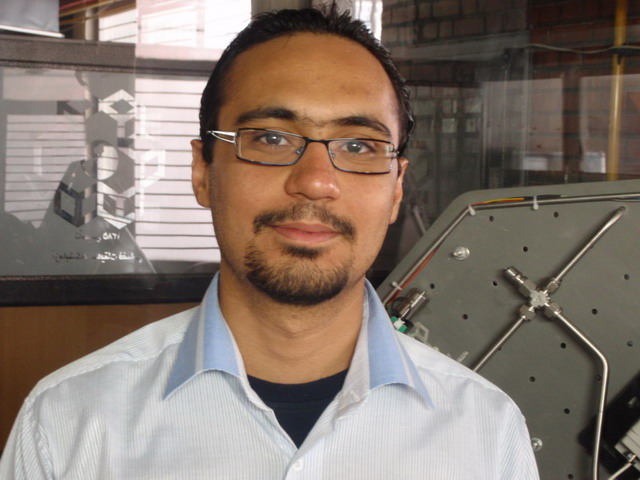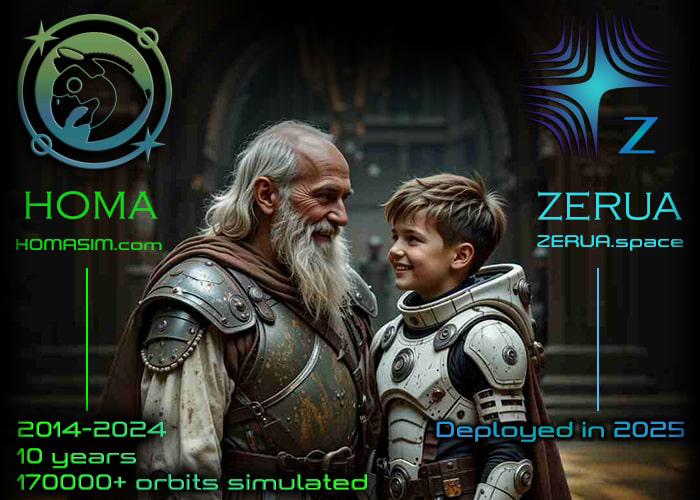Orbital Legacy
Overview
HOMA was a space orbit simulator developed by Abolfazl Shirazi in 2014. It was an online tool that analyzes the space orbits and generates 3D visualization of the space trajectory along with ground track and numerical results.
History
The online tool was originally a MATLAB-based tool, developed in 2011 as a 3D environment framework for understanding orbital elements. The website was launched on July 2014, based on searching in a database of results which have been simulated by the MATLAB code. Until October 2016, the online simulator had limited option in specifying orbital elements. In late 2016, the work for turning the MATLAB code into a WebGL tool started. In October 2017, the upgraded version of HOMA with unlimited simulation was launched successfully. In 2025, after more than a decade of inspiring thousands of users to explore and simulate space orbits, HOMA gracefully completed its mission. Seeing the need for a more capable, flexible, and visually modern platform, the next chapter began with the development of ZERUA.
Simulation
The space orbit simulator displays satellite orbits and generates usable data associated with space trajectories. Designed to fill a need for affordable, user-friendly online tool, HOMA was an academic educational tool intended for engineering, physics, and astronomy students, as well as professors of introductory orbital mechanics. It can also be used for quick visualization and analysis of satellite orbits. The tool can generate a satellite ground track or trajectory with high quality graphics, allowing the user to modify and visualize various orbits, and convert Keplerian orbital elements to position and velocity vectors. In addition, given the orbital elements, HOMA computes the anomalies including mean anomaly and eccentric anomaly and their variations.
Transition to ZERUA
In 2025, the HOMA project officially transitioned to its successor, ZERUA, under the continued development and support of Zerua Tech. After over a decade of serving as an online space orbit simulator, HOMA had reached the limits of its architecture and flexibility. To address the growing demands for real-time data integration, greater interactivity, and broader educational and research applications, the decision was made to build a new platform from the ground up. ZERUA was developed to offer a more scalable and maintainable foundation, incorporating modern web technologies and improved support for satellite data.
ZERUA retains the core purpose of HOMA, making orbital mechanics accessible to a wide audience, while introducing major enhancements in functionality and user experience. With support for live satellite tracking, an expanded simulation engine, and a fully interactive 3D environment, ZERUA is better equipped to meet the expectations of both casual users and space professionals. The migration marks a natural progression in the project’s lifecycle, ensuring long-term sustainability and broader impact.
About the Developer

|
Abolfazl Shirazi
|
HOMA was developed by Abolfazl Shirazi in 2014, who is currently the CEO and Founder of Zerua Tech. In 2016, he was awarded the La Caixa Fellowship Grant for his doctoral studies and in 2021 he obtained his Ph.D. degree with “Sobresaliente Cum Laude” distinction award from the University of the Basque Country UPV/EHU. His research interests are Astrodynamics and Machine Learning and his activities mainly involve spacecraft trajectory optimization, evolutionary computations, space dynamics and control, numerical simulation, orbital mechanics, meta-heuristics, and software development for space simulation.
Continuing the Journey
As the torch passes from HOMA to ZERUA, the legacy of orbital education and exploration lives on. While HOMA served as the foundation for over a decade of learning, simulation, and engagement, ZERUA represents the future—more powerful, more interactive, and built to evolve with the needs of the space community. The dedication and feedback from thousands of users worldwide helped shape this journey, and Zerua Tech remains committed to advancing accessible space technologies for all. The story that began with a simple MATLAB visualization tool now continues through ZERUA—reaching new heights and welcoming a new generation of orbital explorers.
